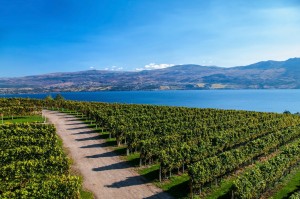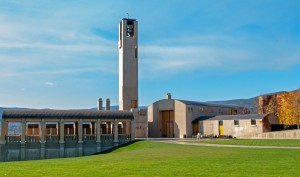About 12,000 years ago, during the end an ice age, a cycle of flooding rushed through parts of Canada, Washington State, and Oregon. These floods ran with the force equivalent to 60 Amazon Rivers and eroded large portions of rock and deposited high quality soil as far south as the Willamette Valley. In British Columbia, these floods helped create the Okanagan Valley, one of the most dynamic wine regions in Canada.
The Okanagan Valley, located east of Vancouver, is a beautiful landscape filled with hills and lakes. The region benefits from large deposits of fertile soils left behind by the ice sheets, dispersed over time by wind and water. The area has a continental climate, moderated by Lake Okanagan. The surrounding mountains help restrict rain, and the southern part of the valley, which borders the Sonora Desert, benefits from the desert’s warm, dry air. All these factors work together to create a patchwork of unique microclimates capable of producing quality vinifera grapes.
Inhabited originally by the Okanagan Tribe; fur traders, miners, and missionaries moved into the region in the early 19th century. The first vines were planted in 1859 at the Oblate Mission by Charles Pandosy and were used to produce sacramental wine. Eventually, the region became known as a fruit growing region, especially once modern irrigation systems were introduced in the 1930s. It was not until the 1970s that growers begin to experiment with vitis vinifera and the area was planted with small amounts of German varieties, such as Riesling, Ehrenfelser, and Scheurebe.
Since that time wine culture in the Okanagan Valley has expanded dramatically. In 1996 there were about 45 wineries. Today, there are over 120, most of them family owned and operated. The vineyards are not limited to a handful of varieties, but dozens. The diversity of microclimates allows for almost any kind of grape to successfully grow. Where one winery produces Syrah and Merlot wineries less than forty miles away are growing Pinot Noir or producing ice wines.
For now, most of the wine is sold primarily at the wineries with some distribution throughout BC. This may soon change as regional associations and proponents attempt to ease Canadian laws on wine shipments and distribution. Although the wines are not yet readily available in the USA or Europe, we have our fingers crossed that this may soon change.
For more information, see the Wines of British Columbia website.
Click here to return to the SWE Website.


